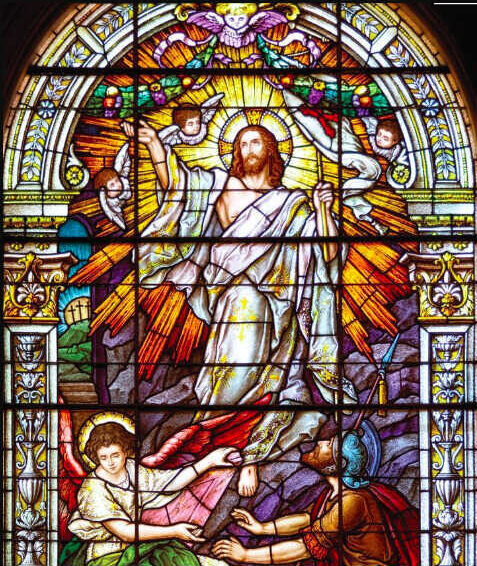They are glass compositions of different chromatic tones, which once assembled, tell a story made of light.
Last Sunday I went to church.
It’s not something I do often, but this time I went, not only to say hello and thank God, but also in response to a kind invitation to a concert.
The beautiful old basilica, in the center of Calgary, was full of people.
When I arrived, the choir was already taking its place at the main altar and the orchestra was tuning its instruments; that peak and dissonant moment that announces future harmonies.
I managed to sneak inside until I found an empty spot on a bench.
The director, with an impetuous gesture of his hand, began the concert.
My ears were enthralled with the Cantata by J.S. Bach, when my eyes also succumbed to the beauty of the stained-glass window, at the top of the main altar.
I looked in detail at that glass filigree, held only by very thin metal rods, which told the story of a resurrected and glorious Christ.
Music took over the venue, choral harmonies that shone with corporeal light.
Suddenly, I let myself be carried away by a brief but pleasant trance.
The brilliance of the glass of the large window and the multichromatic notes executed impeccably by the choir, merged in a tridimensional mosaic of light and sound.
I came back to myself when an applause erupted into a great roar.
I was also there, applauding, moved.
Now I understand the words of that other musician, Maurice Ravel, composer of the famous Bolero, when he said that:
“Music is dream crystallized into sound.”
Thank you to the Calgary Bach Choir for this musical gift.

Leonor Henríquez (Caracas, Venezuela) Civil Engineer by training (UCAB 1985), writer and apprentice poet by vocation. From her time in engineering emerged her Office Stories (1997), another way of seeing the corporate world. Her latest publications include reflections on grief, Hopecrumbs (2020) (www.hopecrumbs.com) and “The Adventures of Chispita” (2021) (www.chispita.ca) an allegory of life inside Mom’s belly.
Today she shares her “impulsive meditations” from Calgary, Canada, where she lives.
leonorcanada@gmail.com

